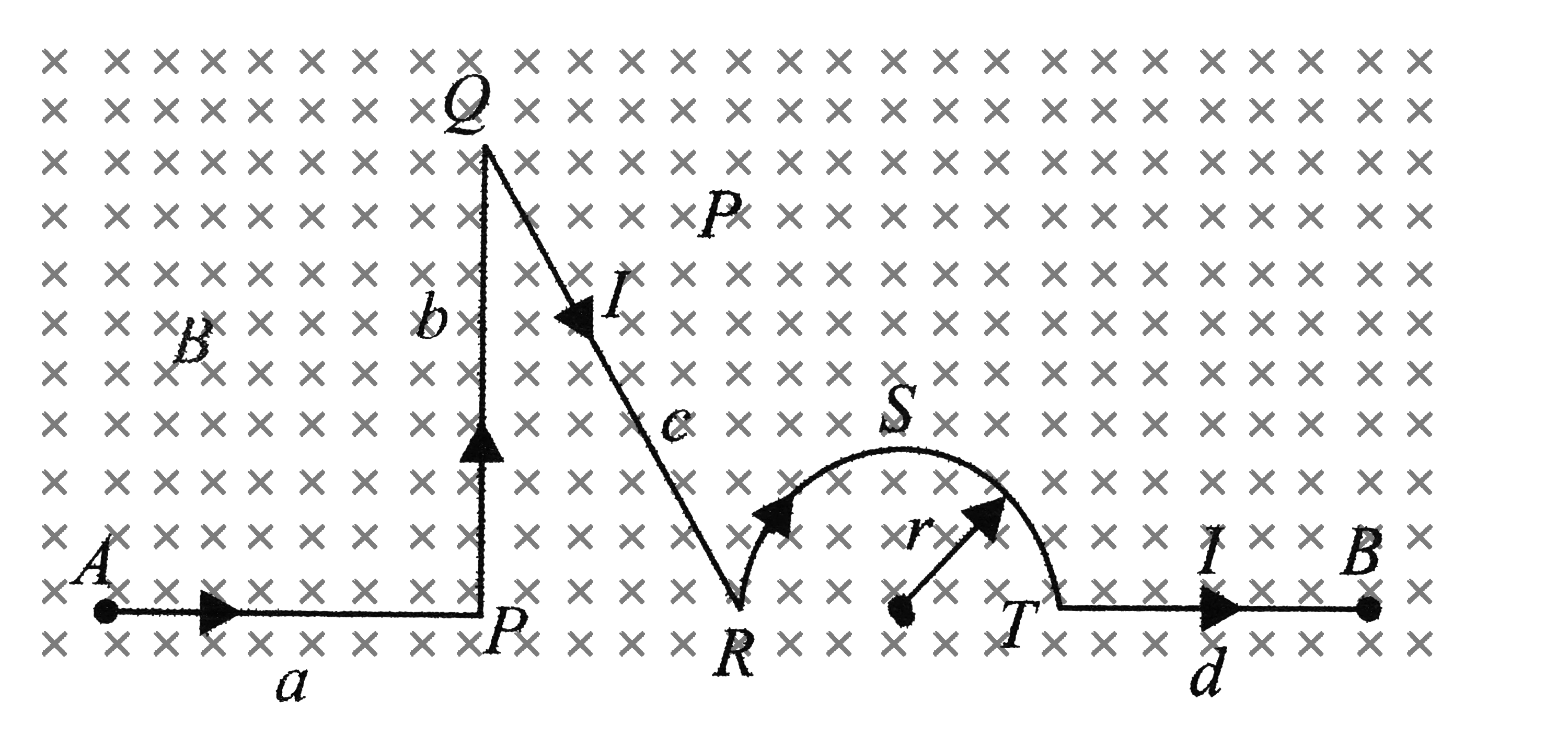The force exerted on a current-carrying wire placed in magnetic field is zero when the angle between the wire and the direction of magnetic field is :
To solve the problem, we need to determine the angle between a current-carrying wire and the direction of the magnetic field when the force exerted on the wire is zero.
1. Understand the Formula: The force F on a current-carrying wire in a magnetic field is given by the formula:
F=BILsinθ
where:
- F = force on the wire,
- B = magnetic field strength,
- I = current flowing through the wire,
- L = length of the wire,
- θ = angle between the wire and the direction of the magnetic field.
2. Set the Force to Zero: According to the problem, the force F is zero:
F=0
Therefore, we can set the equation to:
BILsinθ=0
3. Analyze the Equation: For the product BILsinθ to equal zero, at least one of the factors must be zero. Since B, I, and L are not zero (assuming there is a magnetic field, current, and length of wire), we focus on:
sinθ=0
4. Determine the Angles: The sine function is zero at specific angles:
sinθ=0whenθ=0∘,180∘,360∘,…
However, in the context of this problem, we are interested in the angles relevant to the physical situation, which are 0∘ and 180∘.
5. Interpret the Angles:
- θ=0∘: The wire is aligned with the magnetic field (in the same direction).
- θ=180∘: The wire is aligned with the magnetic field but in the opposite direction.
6. Conclusion: Since the question asks for the angle when the force is zero, we can conclude that:
θ=180∘
Final Answer:
The angle between the wire and the direction of the magnetic field when the force exerted is zero is 180∘.
F=BILsinθ
where:
- F = force on the wire,
- B = magnetic field strength,
- I = current flowing through the wire,
- L = length of the wire,
- θ = angle between the wire and the direction of the magnetic field.
F=0
Therefore, we can set the equation to:
BILsinθ=0
sinθ=0
sinθ=0whenθ=0∘,180∘,360∘,…
However, in the context of this problem, we are interested in the angles relevant to the physical situation, which are 0∘ and 180∘.
- θ=0∘: The wire is aligned with the magnetic field (in the same direction).
- θ=180∘: The wire is aligned with the magnetic field but in the opposite direction.
θ=180∘
The angle between the wire and the direction of the magnetic field when the force exerted is zero is 180∘.
Similar Questions
Knowledge Check
A current of 10 ampere is flowing in a wire of length 1.5m. A force of 15N acts on it when it is placed in a uniform magnetic field of 2 tesla. The angle between the magnetic field and the direction of the current is
A30∘B45∘C60∘D90∘
When is the force experienced by a current-carrying conductor placed in a magnetic field is largest?
View SolutionThe direction of force on a current carrying conductor in a magnetic field is given by
View SolutionCalculate the force on a current carrying wire in a uniform magnetic field as shown in Fig. 1.59.

View SolutionA current of 10 ampere is flowing in a wire of length 1.5m. A force of 15N acts on it when it is placed in a uniform magnetic field of 2 tesla. The angle between the magnetic field and the direction of the current is
View SolutionWhen a current carrying conductor is placed in a magnetic field, it experiences a mechanical force. What should be the angle between the magnetic field and the length of the conductor so that the force experienced is :
(i) Zero
(ii) Maximum ?
View SolutionA: Net magnetic force expericneed by a current carrying loop in a uniform magnetic field is always zero.
R. A current loop placed in a uniform magnetic field never experiences a torque.
View SolutionWill a current loop placed in a magnetic field always experience a zero force?
View Solution
